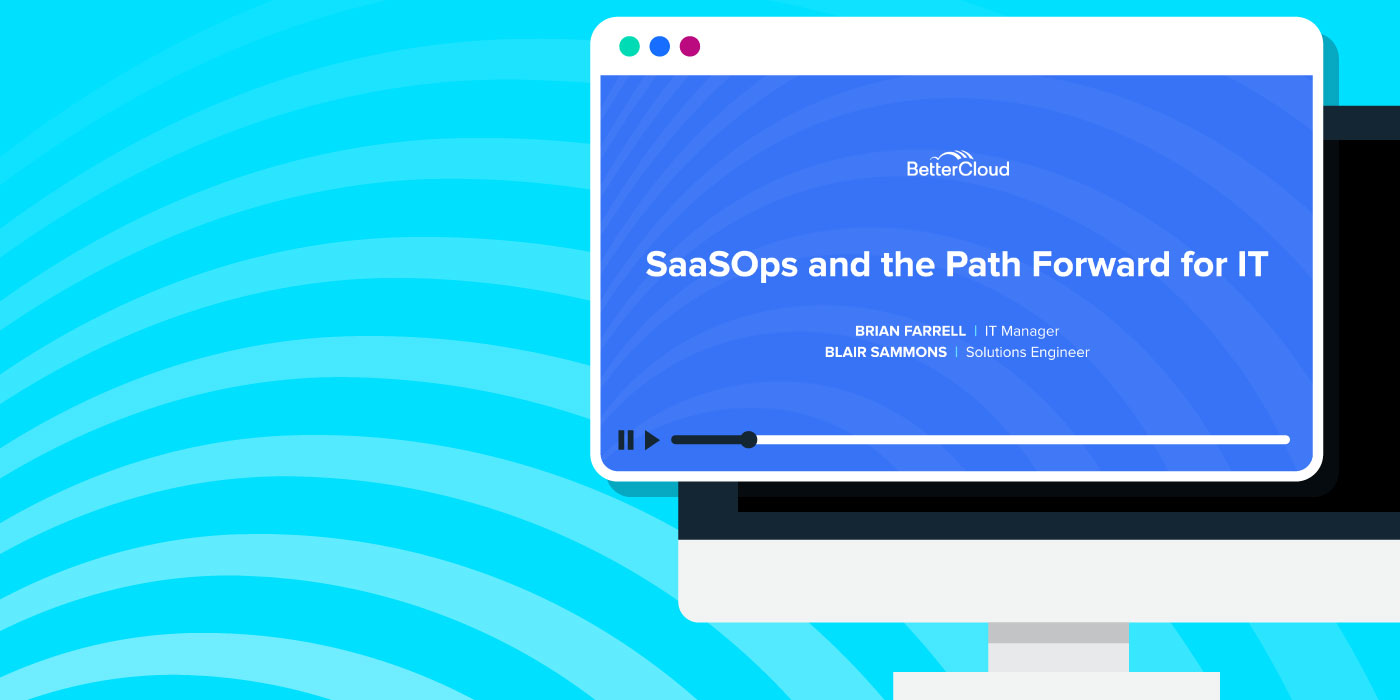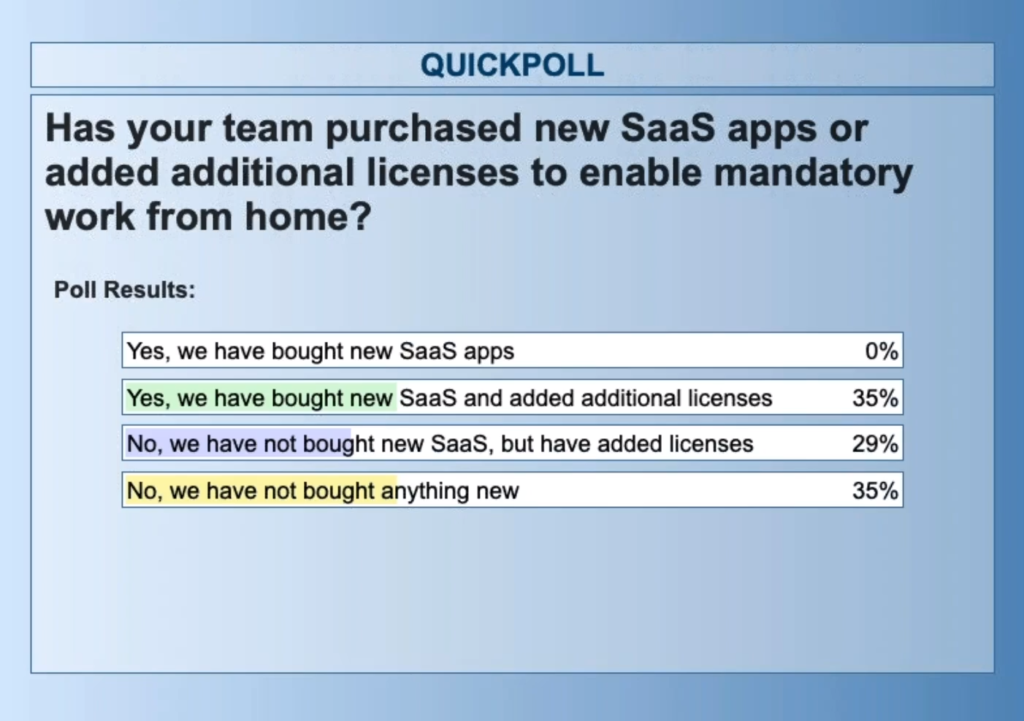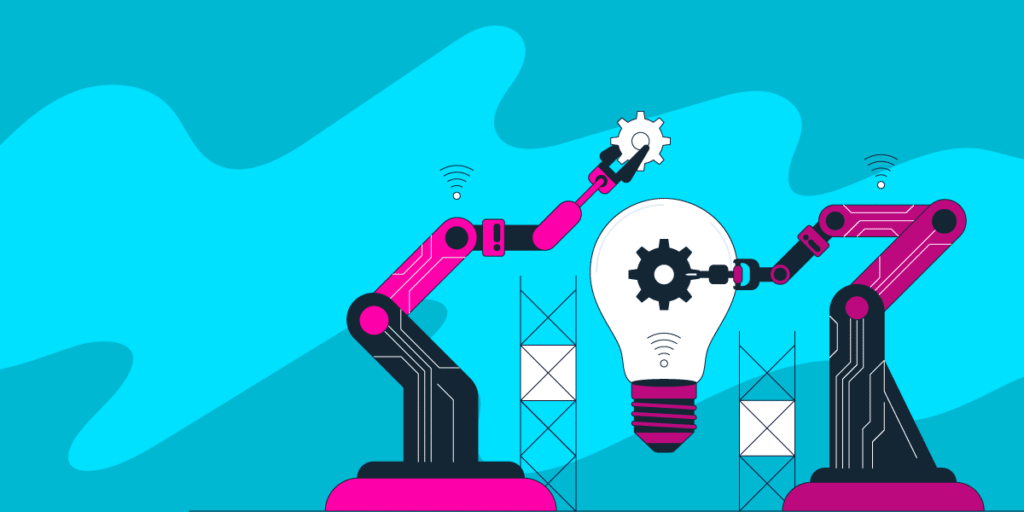SaaSOps and the Path Forward for IT (Live Session Recap)
June 4, 2020
4 minute read

As companies hit digital transformation at warp speed (and will most likely stay there!), how are IT strategies changing, and what does the path forward look like? BetterCloud team members Brian Farrell, IT manager, and Blair Sammons, solutions engineer, recently presented a webinar on this very topic. If you missed it, here’s a recap.
To watch the live chat recording of “SaaSOps and the Path Forward for IT,” click here.
The need for the SaaSOps skill set, now more than ever
We’re seeing a huge influx of roles for SaaSOps. We’ve sent everyone home and need to enable them to continue doing their jobs. Remote work or “work from home” (WFH) was already a growing trend, which has only accelerated with the pandemic.
In fact, companies like Twitter, Square, Shopify, and Facebook have even announced long-term or even permanent WFH plans.
As SaaS app usage rises exponentially, IT pros still have to manage how they’re used. That’s what SaaSOps is all about. We’re all familiar with the value of buying apps instead of building, but buying doesn’t automatically mean everything is “hunky dory.” We can’t rely on the SaaS provider’s support team to do it all. For example, the Google best practices list is about 200 steps long.
Increase in workflow actions usage, across the board
Across all users of BetterCloud, both customers and internal, overall automation using BetterCloud workflows has increased about 30% from February to April. Many of the actions are things like assigning Zoom licenses to more people.
Users have noticed that more total hours of meetings is part of the new normal, as casual, internal, “drive-by” conversations now become meetings.
IT environments through the digital transformation
How IT strategies will change overnight:
Some cloud -> 100% cloud
Trusted devices -> Any device
Protecting perimeter -> No perimeter
Monolithic tools -> Best-of-breed apps
UX secondary -> UX above all
Employees only -> Extended enterprise— Aaron Levie (@levie) March 29, 2020
It’s not as though these changes only started now. But the pandemic has accelerated the transition, and we’ve crossed the chasm.
Trusting devices is difficult when not everyone has a laptop. Having the entire office VPNing in isn’t sustainable for multiple months.
To run IT, you have to have the right tools, which means choosing best-of-breed apps. While there may be 10 significant apps that nearly all employees need, there are usually many more in use. For example, BetterCloud uses a total of 160. IT is responsible for the core ones as well as many of the others.
The tightening of purse strings
Controlling access to those apps and making sure users have the right permissions within the apps gets “real spicy,” according to Farrell. Getting additional licenses is becoming more difficult, requiring levels of approval, so it’s important to make sure the existing licenses are claimed and used.
In the past, apps were monolithic. IT pros had time to focus only on administering one thing, such as Active Directory. But that’s not possible with today’s lean IT teams. IT is becoming less siloed and more holistic.
The impact of WFH on SaaS adoption & licenses
We took a poll:

Poll results: Nearly two-thirds of respondents have purchased additional SaaS licenses.
Our webinar presenters concluded that everyone was fairly best-of-breed prior to the pandemic. Additionally, IT is probably a bit less affected than other industries, with lower numbers of hiring freezes and layoffs, considering IT pros are needed to enable remote work. It’s also likely that our webinar attendees are with tech-forward companies.
Changing processes to enable browser-based work
Farrell explained that at BetterCloud, we’ve had to find some creative solutions for things, such as some production systems that require device authentication. However, we can remotely manage BetterCloud laptops. Additionally, if any employee tries to use a personal device, they’ve been fairly well enabled to make it work. We can check that the device is up to date with the latest patches and has things like disk encryption and endpoint protection.
Gateways into our systems are astronomically higher. We don’t have control over what network people are connecting to in many cases. How are we remediating that?
At BetterCloud, we’re very much users of our own product, and we rely on alerting for things like email forwarding, publicly shared files, or files that have certain types of content, such as PII. We have a joint IT/security team and collaborate all the time in a Slack channel. We also enable remediation steps, and if we see anything suspicious, we’ll reach out to the user to ask, or potentially revert the sharing settings. With BetterCloud, we’re able to remediate the potential threat before it can become a real threat.
There are various levels of remediation you can set up, as opposed to other apps where it’s either a “fire and brimstone” or “scorched earth” approach to make sure everything is protected.
For example, you can wait a few hours and then email the user to inquire. Or you can set up a different type of workflow based on the context, such as the user’s department and seniority.
Many SaaS providers are starting to offer contextual access awareness—device intelligence so you can tell if files were accessed by a company-issued or personal device.
Security concerns and emerging shadow IT
Some SaaS apps are offering free trials, which can result in IT not being aware of new apps being adopted. With some trials lasting three months, users could be active in an app for a significant duration before IT even realizes.

Poll results: 75% of respondents say security has become a larger concern. No respondents felt that security had become less of a concern.
For those who responded, “Security concern has stayed about the same,” Sammons wondered, “Was security ‘hair on fire’ before?” Farrell responded that it’s becoming more common for IT and security teams to work together, so it’s likely that many were working well before, and the shift to remote work shouldn’t matter too much.
The new now or the new normal?
Who led the digital transformation in your company? pic.twitter.com/45ybMCW0Xu
— Serge van Ginderachter (@svg) March 30, 2020
People are seeing the difficulties now, resulting in recognition for IT (although some of us may want to go back to being hidden in the data center, Farrell joked). IT has the responsibility and power to help people get work done more easily without adding more stress. This is a real opportunity for IT to be the hero.
To learn more, watch the recording of our recent webinar, “It’s the End of the Office as We Know It: The Importance of SaaS Operations in the Remote-First World.” You’ll get insight from IT industry analysts, 451 Research, and BetterCloud’s chief strategy officer on how to build a long-term strategy for enabling and securing the digital workforce.






